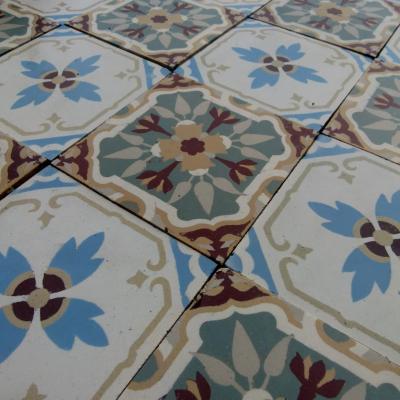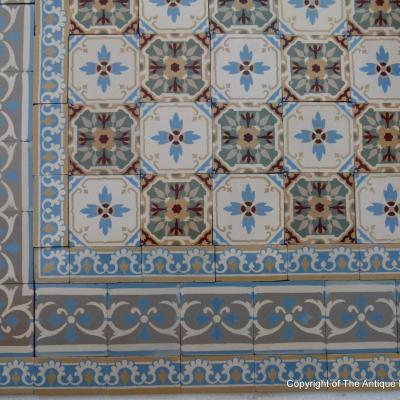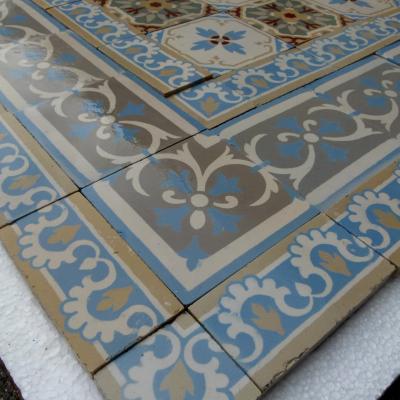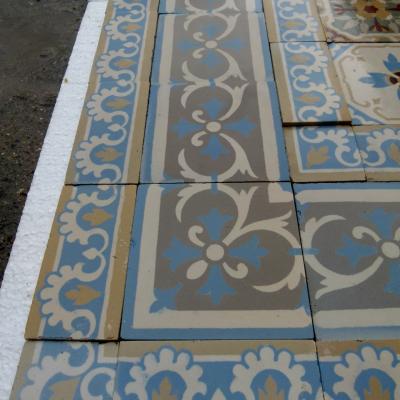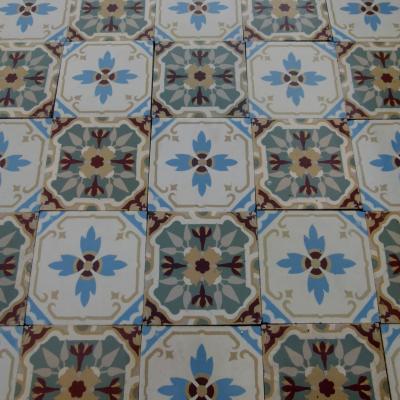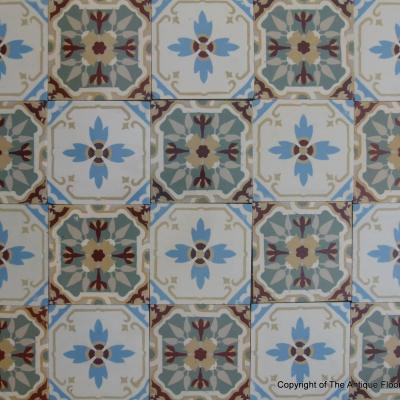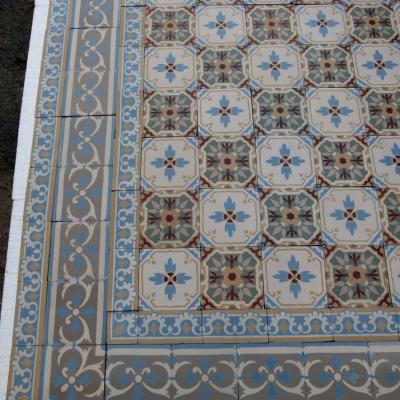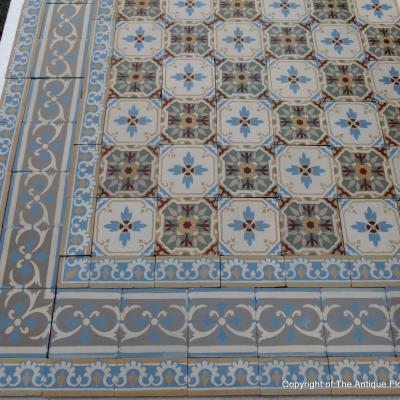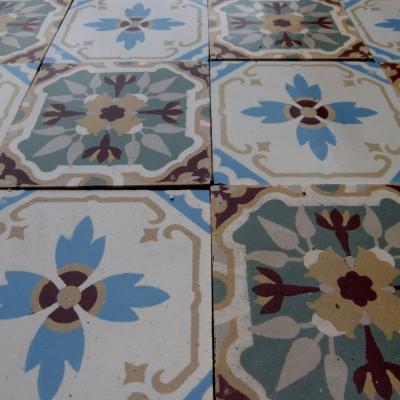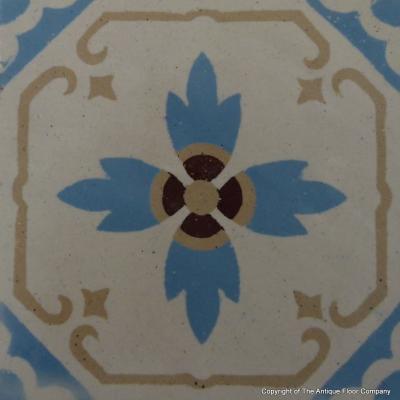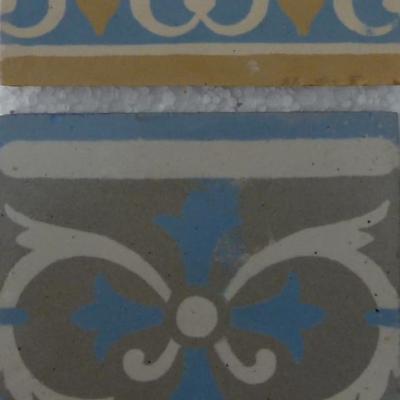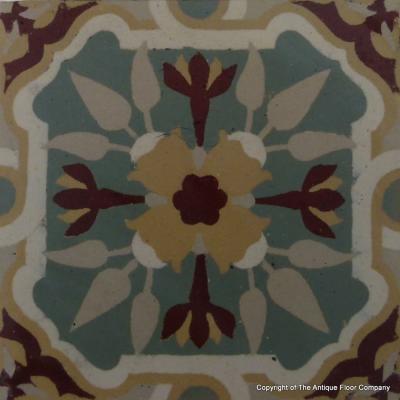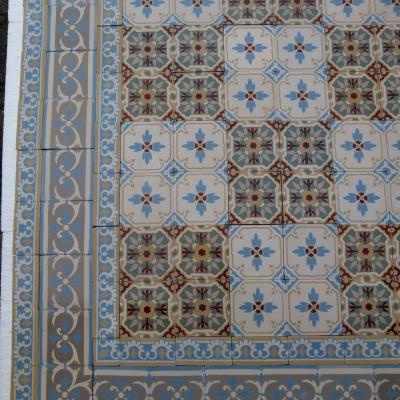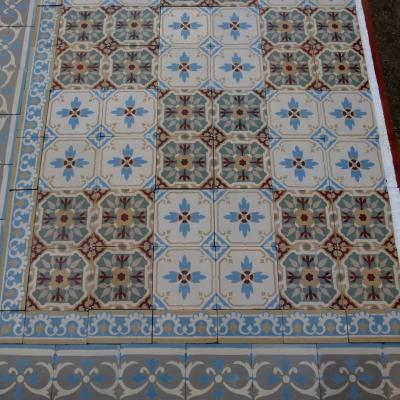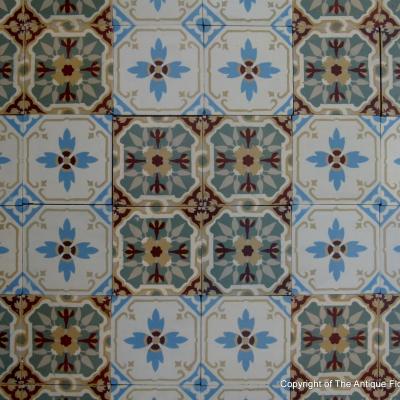8.7m2+ Belgian ceramic encaustic floor c.1920
A small and unusual Belgian ceramic antique floor dating from c.1920, complete with its original same size and half size border tiles, which are laid in duplicate. The primary section of the floor comprises of two 14cm square field tiles, a simple blue cross on an off-white fond with beige piping and a more ornate floral themed tile with burdundy and teal in the palette. Both tiles have corner design elements which simulate cabochons or tile inserts. The field tiles were originally laid in a damier or chessboard style although, as we have shown below in the photographs, they can be laid in fours effectively too. The main section of the floor is framed by a triple border with both the same size and half size border sharing the same palette as the cross themed field tiles with the large border introducing a mid grey also. All four large border corner tiles and eight small border corner tiles are present.
The floor has cleaned very well and arrives ready to relay. The slip is excellent, the colours consistent and the ceramic, aside occasional small chips and edge nibbles on some tiles, all of which are groutable, is in very good condition. The floor was originally laid in a kitchen in a house in Gembloux, Belgium but can be laid either inside or outside of the home as the tiles were highly fired and are impervious to frost and ice or high summer temperatures. Once laid it will not require sealing and a regular wash is all that will be needed to retain its beauty. The photographs below show a random c.1.25m2 section of the floor.
Tile quantities, give or take one or two:-
Cross field tiles - 127 - 2.5m2 / 27 sq. ft
Floral field tiles - 128 - 2.5m2 / 27 sq. ft
Large border tiles - 99 plus 4 corners - 2m2 / 22 sq. ft or 14.6 linear metres or 47.8 linear feet
Small border tiles - 169 plus 8 corners - 1.7m2 / 18.4 sq. ft or 24.4 linear metres or 80 linear feet
NOTE:-
Antique tiles were most commonly made in single or two tile moulds. Before current computer automation methods their moulds were made my hand and the colour slips mixed by eye. Kiln temperatures could also be variable, as could the firing time. The result is that often tiles display subtle size and thickness variations and there can be tonal variations in colours, owing to the slip mixing and/or firing time. All of this makes these handmade tiles unique and adds to their charm. Some floors display their subtle variations in size and tones, some not, but when photographing we always take a random section of the floor so that it is representative of the whole. A tiler should always dry lay a section of the tiles to familiarise himself with them before starting to fix lay.
CL42



